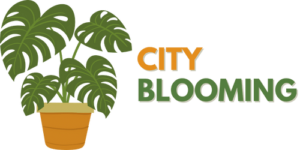How City Blooming can Save You Time, Stress, and Money.
The City Blooming PDFs
Table of ContentsThe Of City BloomingCity Blooming Fundamentals ExplainedIndicators on City Blooming You Need To Know7 Easy Facts About City Blooming ExplainedThe Only Guide to City Blooming
Intrigued in growing food for sale in the City of Chicago? Below is a list of often asked questions pertaining to the policies and guidelines that farmers should think about when planning a metropolitan farming project.
The zoning amendment does not change any type of other codes managing composting, building licenses, purchasing or leasing City had residential property, service licenses or environmental contamination. There are existing codes that regulate these problems and they continue to be in full result and might be applicable to your job. Area gardens are typically possessed or managed by public entities, public companies or community-based organizations and kept by volunteers.
Urban farms expand food that is planned to be sold, either on a not-for-profit or for-profit basis. Due to their commercial function, urban ranches require a business certificate.
Excitement About City Blooming
Composting is permitted but only for plant material that is created and made use of on site. The amount of garden compost material can not exceed 25 cubic lawns at any provided time according to the criteria in 7-28-715 of the City's Municipal Code. Yes. Because the soil at most new garden websites requires changing, garden compost, soil, timber chips, or other products can be acquired to build or improve the growing space - indoor plants.

If a building permit is called for then the hoophouse will certainly be taken into consideration an accessory building. You can figure out even more concerning the structure permit needs by getting in touch with the Division of Structures. The 25,000-square-foot size restriction is meant to prevent a solitary area yard from controling a provided block or detracting from the block's existing domestic or commercial personality.
The limitation does not apply to gardens found in Public Open Area (POS) districts. Can there be more than one community garden that is 25,000 square feet on a solitary block? Secure fencing is not required, nevertheless, yards that have huge parking locations might be required to mount secure fencing or other landscape design functions.
City Blooming Can Be Fun For Everyone
B1 & B2 areas need that all commercial usage tasks be conducted inside. R districts limit industrial task. The guidelines mirror the function and intent of the Zoning Code. Is fence needed for urban ranches? Yes. Fencings may be required, together with landscape design and testing, for certain parking lot and exterior work or storage areas relying on area and the particular task taking location.
Yes. Urban farms call for structure licenses and zoning authorizations before building. Various other kinds of city review may be needed depending on details frameworks, activities, dimension, landscape design, licensing, public heath and stormwater administration issues. Most of these demands are recognized in the project design or allowing procedure, nonetheless, the candidate may be responsible to separately identify specific licenses or permits that might be called for.
The Department of Organization Affairs and Consumer Protection can help figure out the specific type of company permit that's required. Off street auto parking is required for most industrial projects in Chicago. The required number of car park areas is based on the number of employees functioning on website and not the square video footage of the growing space.
Excitement About City Blooming

A metropolitan farm can offer garden compost product generated on website, nevertheless, the operation has to conform with the policies in 7-28-715 of the Chicago Municipal Code. Aquaponic systems are enabled indoors on metropolitan farms in many zoning districts.
Up to 5 hives or colonies of honey might be maintained as an accessory usage. However, beekeepers should register with the Illinois Division of Agriculture. To find out more concerning the suggested zoning modification you might get in touch with the Division of Housing and Economic Development, Bureau of Preparation and Zoning at 312.744.8563.
Farming in cities and metropolitan locations A city ranch in Chicago. Urban farming describes different methods of cultivating. https://www.metal-archives.com/users/cityblooming, processing, and dispersing food in metropolitan areas. The term likewise uses to the area tasks of animal husbandry, tank farming, beekeeping, and horticulture in a city context. Urban agriculture is distinguished from peri-urban agriculture, which takes location in country areas beside suburban areas.
The Definitive Guide for City Blooming
, this post that look for to create social networks founded on a common values of nature and neighborhood holism. These networks can create by method of official institutional support, ending up being integrated right into local community preparation as a "shift community" movement for lasting metropolitan development.
In either instance, the more direct accessibility to fresh veggie, fruit, and meat products that may be become aware via urban agriculture can improve food safety and food security while decreasing food miles, resulting in lower greenhouse gas discharges, consequently adding to environment modification mitigation. Some of the initial proof of urban agriculture originates from Mesopotamia.